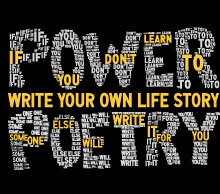
For many writers and aspiring writers, New York City is ubiquitous. It has long been one of the artistic centers of not only the United States, but the world; and very nearly every literary movement has had its moment in the city.
With so much writing surrounding a single place, it's hard to know where to start when trying to define the best. Looking for single works that capture something truly New York is like searching for a needle in a haystack. While it is easy to look out your window in the city and write about what you see, capturing a moment that encapsulates the city's soul is not as simple. We've compiled five poems that speak to what makes New York its undyingly unique self. They capture the sleepless, diverse, creative, musical city, while simultaneously speaking to its unknowable nature. There's no one definitive piece written on New York, but as each of these capture a unique fragment, together they can paint a larger picture. Read on to check out some poetic versions of New York City.
Top New York City Poems
- "Howl" by Allen Ginsberg. "Howl" is one of the most notable works of The Beat Generation and it places a spotlight on Ginsberg's experience as a young writer in New York City in the 1950's. Through this, it discusses openly the mental health, art, music, drugs, and activities of Ginsberg's peers: typical young New York creatives. It dissects what it is to be young and lost in a city that never sleeps while exploring the absurdity of a place where people only belong because nobody belongs. This work is best when read aloud. It is written in dense sentences with limited punctuation which mirrors the feeling of being in Manhattan through Ginsberg's onomatopoeia of word choice that mimics the sounds of the city.
- "New York Poem" by Terrance Hayes. Similarly to "Howl," "New York Poem" uses condensed structure with somewhat erratic line breaks to create a pace that feels like the city street. Within this structure, Hayes cycles through single moment with no clear relation to one another, like conversations heard in passing. In these conversations, Hayes touches on visual features of the city in a removed manner, highlighting the odd people with a degree of impersonality. In this way he lets the reader step into the shoes of someone just existing on a city sidewalk, with all the disorientation and visual noise this brings.
- "Mannahatta" by Walt Whitman. This work dates all the way back to the 1800's, but it still gets at a piece of New York that is unchanged today. "Mannahatta" gives something of a bird's eye view of New York, reminding the reader that it is an island and focusing in on the water surrounding it. This nature-centric view of the city is unusual in much of the writing about it, and it presents one of the most unique aspects of New York. New York is a green city, from Central Park to The Village ginko trees, and the integration of nature is something that sets it apart from many other, more industrialized cities.
- "The Tropics of New York" by Claude McKay. McKay is a poet from the Harlem Renaissance period — a movement that took place in in New York in the 1920's. Much of the writing from the movement centers on social issues impacting the African American community, especially in cityscapes. Through this, much Harlem Renaissance literature explores the diversity integral to New York as well as the challenges faced by its minorities. In this work, McKay juxtaposes images of sidewalk fruit stands and grocery stores with those of hunger. The use of contrasting images of abundance and deprivation highlights an aspect of New York that is often overlooked and they open a discussion of scarcity in the city. What makes New York so competitive and productive is the need to fight to survive in it — it wouldn't be the same without those qualities.
- "An Open Letter to NYC" by Beastie Boys. A song off their first album released after 9/11, "An Open Letter to NYC" is exactly what its title suggests. It covers everything iconic in a non-tourist sense: "Brownstones, water towers, trees, skyscrapers / Writers, prize fighters and Wall Street traders." In this love letter, the trio of artists discusses what they each love about New York, from the perspective of locals. This offers perhaps the most important view on the city: one of someone who is a part of it. New York is shaped by its citizens, its social activism, art movements, food, nightlife, etc. New York's day-to-day routine is dictated by the people who make the city run. While many people have written about New York, a love letter to the city directly from the people who make it special stand above works written by those just visiting.
